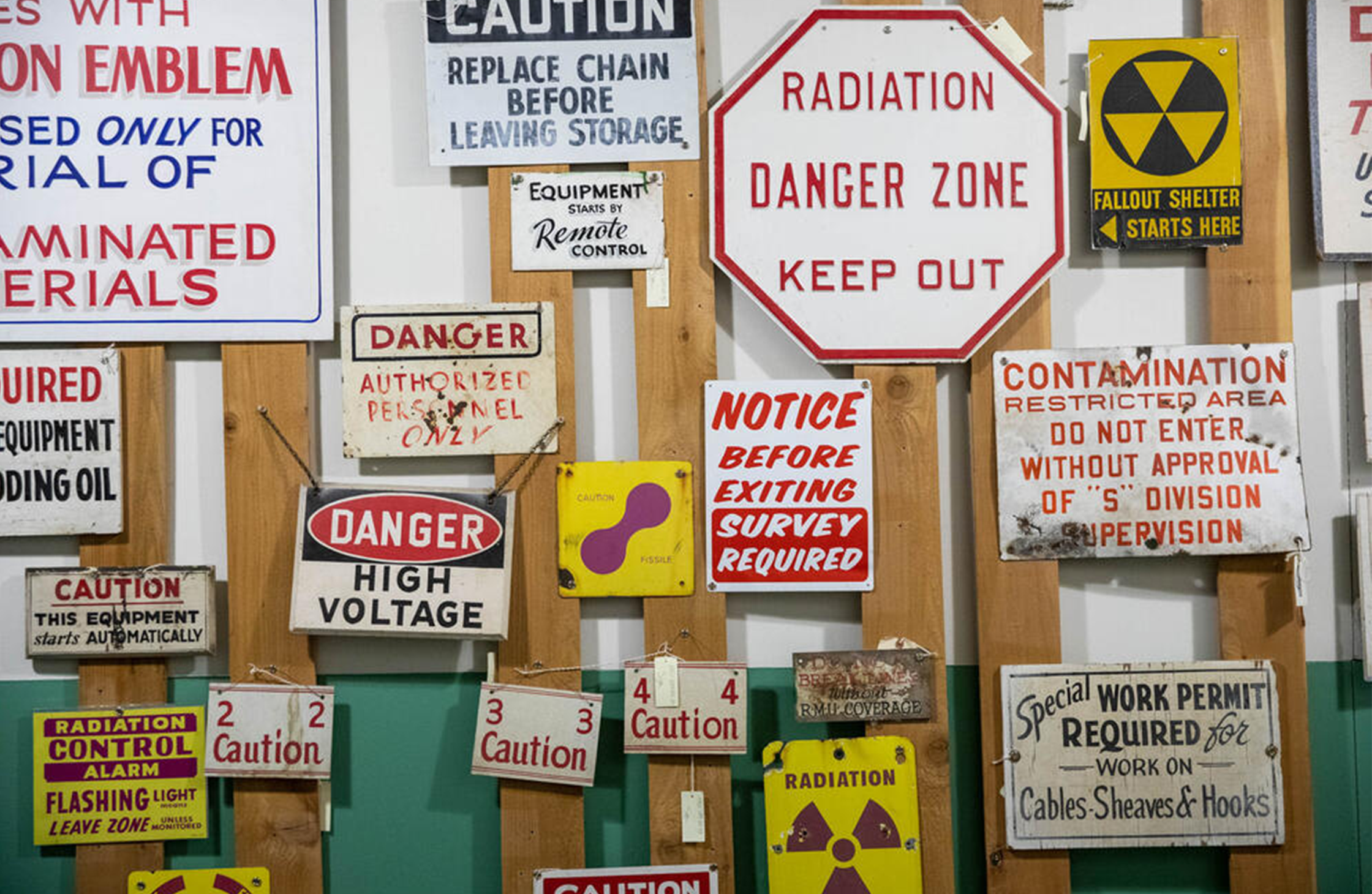Since the beginning of the Hanford and Manhattan projects, radiation safety has been essential. While other industries still lacked safety standards, the safety of workers and the public was an early concern of the Manhattan Project, and efforts to ensure safety in the nuclear industry have progressed rapidly since then. Hanford was central to the rapid implementation of controls and public-facing communication. In a memo to management dated November 1944, Dr. W.D. Norwood specified that “the [M]edical Department and [Industrial Hygiene Group] will feel free to make any investigations necessary concerning any incident or radiation hazard which may potentially exist or have occurred.”1
The nuclear industry was born during World War II as the Manhattan Project, operating in Hanford, Washington; Oak Ridge, Tennessee; and Los Alamos, New Mexico. The B Reactor Manhattan Project Park offices are here in Richland, Washington!
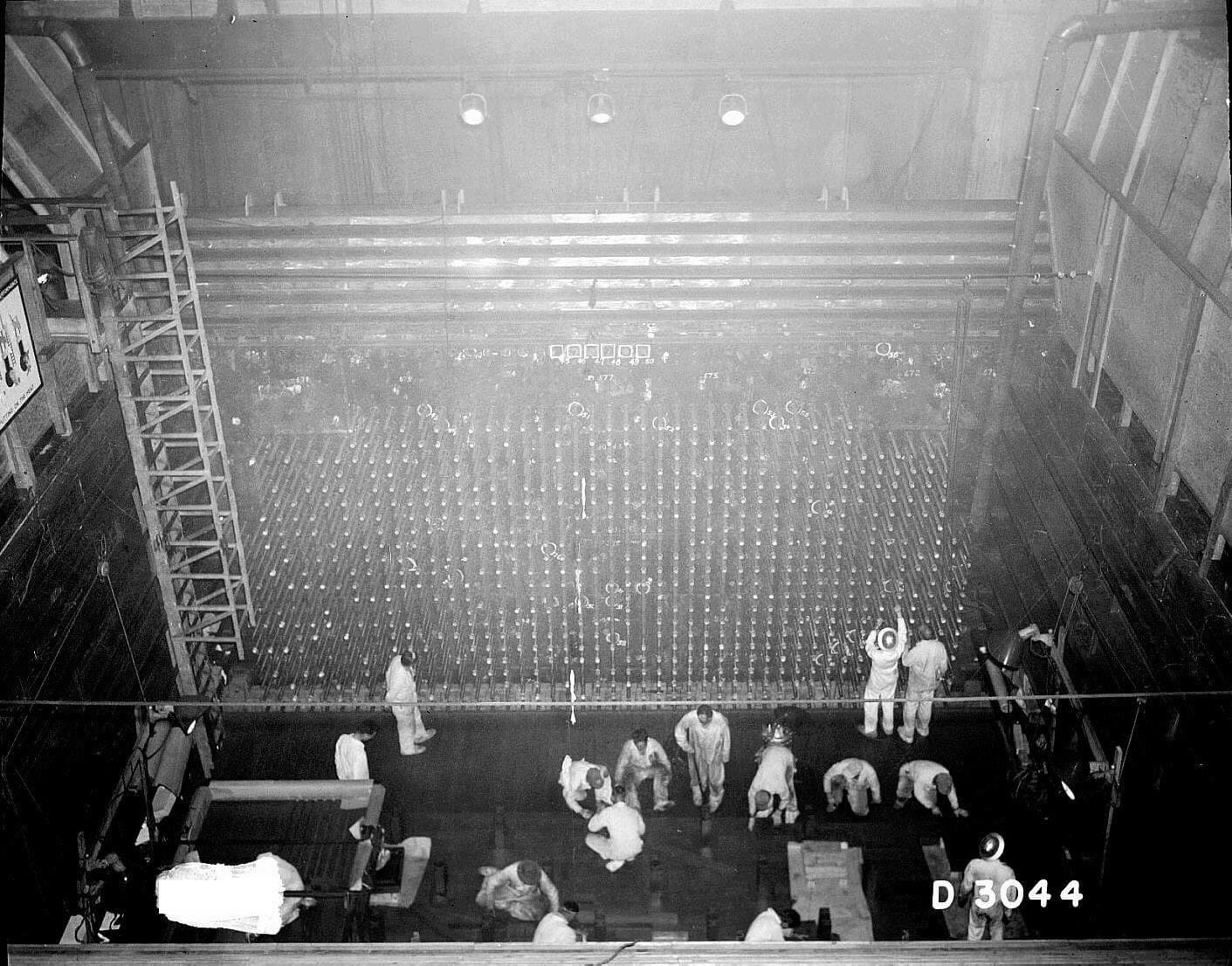
Enrico Fermi and Robert Oppenheimer built the first reactor, Chicago Pile-1, under the handball courts at the University of Chicago. This was just a feasibility test, not a production reactor. The first functioning production reactor was the B Reactor, established at Hanford in 1944 and placed under the supervision of Enrico Fermi — using the code name Dr. Eugene Farmer — and Colonel Franklin Matthias of the U.S. Army Corps of Engineers.
Hanford built and operated fuel reprocessing plants to separate plutonium from uranium. The first of these processing plants was T Plant in 1944, which was soon followed by B Plant. Subsequent fuel reprocessing facilities were added with improved technology, including the Redox and PUREX plants. PUREX operated from 1956 to 1972 and again from 1983 to 1988.
From 1950 to 1989, the Atomic Energy Commission (AEC) also operated reactors and process facilities at the Savannah River Site near Aiken, South Carolina, but these were built several years after the end of World War II and the termination of the Manhattan Project.
Hanford was a significant player in the birth of the nuclear reactor industry, particularly in the production of weapons-grade plutonium and weapons reactor development. Today, most of the ongoing activities at Hanford relate to the cleanup and mitigation of the fissionable waste produced by plutonium production activities.
Understandably, the entire nuclear reactor industry paved the way for the implementation of radiation safety controls and signs, which have gone through quite an evolution over the years.
As Professor Emeritus Ronald Kathern at WSU Tri-Cities wrote, it became apparent that a “system of written instructions for the execution of all hazardous jobs [must be] … formulated, and has become an important feature of radiation hazard control.”2
Early on in the project, Dr. Louis Slotin was exposed to a lethal dose of radiation during an experiment, resulting in his death. Such life-threatening hazards highlighted the importance of nuclear criticality safety.
At Hanford, personnel at all levels evaluated the procedures involved in handling radioactive materials. Kathern notes that “[a]dditional precautions were taken by studying each job before it was done, where the possibility of radiation hazards might exist. Danger zones were set up and posted as such.”3
The solution to Hanford’s unique risk of radiation was signage: postings and warning signs wherever employees could be adversely affected by exposure to radiation or radioactive material.
The first Hanford postings were created by journeymen sign painters at the Hanford sign shop. Besides finding an effective way to warn workers of the radiation hazards in their work areas, they had to identify areas where protective clothing and respirators were needed to mitigate internal radiation hazards. As the National Park Service explains, “Hanford sign painters were the beginning of what would become an important part of nuclear safety around the world today — the use of standardized signs to warn of workplace dangers … Hand-painted safety signs were ubiquitous on the Hanford site and addressed a variety of industrial safety hazards.”4
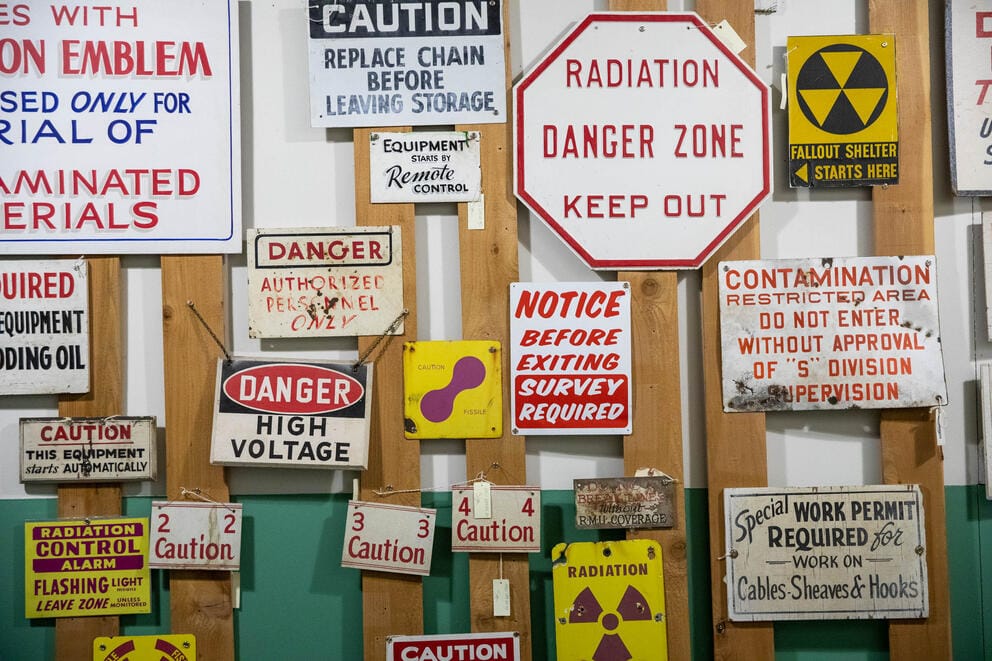
Signs were particularly important where spent reactor fuel was processed to extract plutonium and separate it from waste fission products. The sign shop developed an octagonal white sign with red letters spelling out, “Radiation danger zone, keep out” in all caps. It was posted at work sites with significant radiation hazards and was often accompanied by standard textual warnings such as “Do not open during reactor operations.”

By 1946, the need for radiation safety signs and hazard identification symbols was also recognized at Oak Ridge and other Manhattan Project locations. In 1946, a three-bladed radiation warning symbol in magenta and blue was designed at the University of California Radiation Laboratory. Nels Garden, the head of the Health Chemistry Group, chose the original magenta hue because “it was distinctive and did not conflict with any color code that we were familiar with.”5 Garden explains that the group avoided yellow since the high-visibility color was used extensively across the site already. However, the blue color quickly faded and failed to communicate the intended message, leading to complaints from workers.
In 1948, Bill Ray and George Warlick were enlisted to design a new icon to communicate danger from radiation. They stuck with the original magenta but pasted it on a yellow background to make it more easily visible. While black on yellow is most common internationally, the U.S. has kept magenta as the standard, although American National Standards Institute (ANSI) regulations allow black to be substituted for magenta.
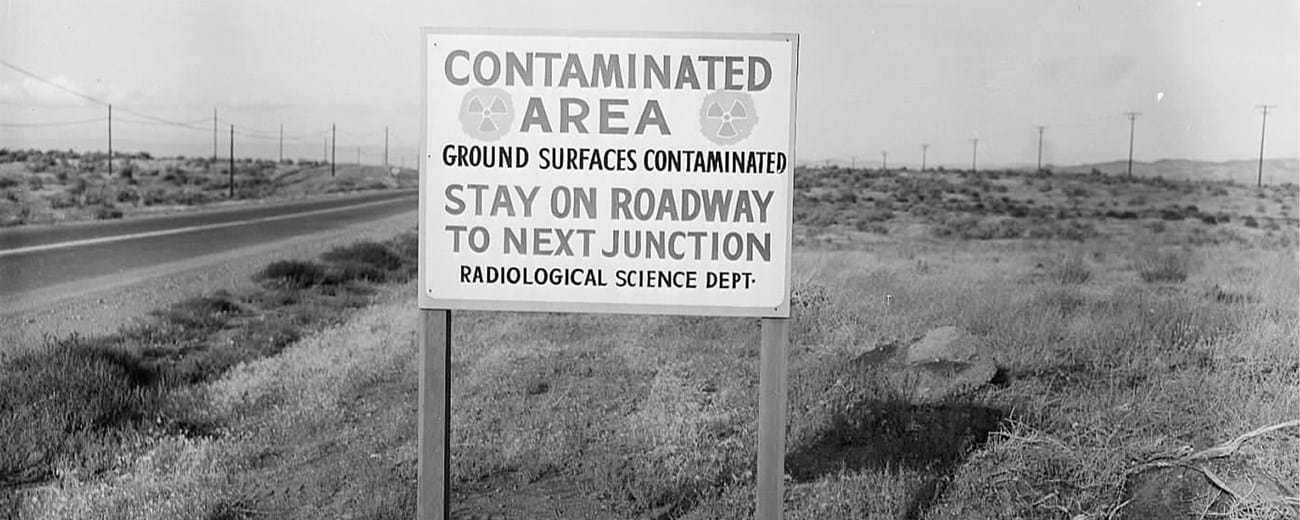
By the late 1970s, radiation signs posted at Hanford matched the Radiation Area designations defined in 10 CFR 20.6
Where radioactive materials must be transported, including Hanford, the diamond-shaped yellow and black sign with the trefoil and the word ‘RADIOACTIVE’ in uppercase has become the standard for radioactive material transport.7
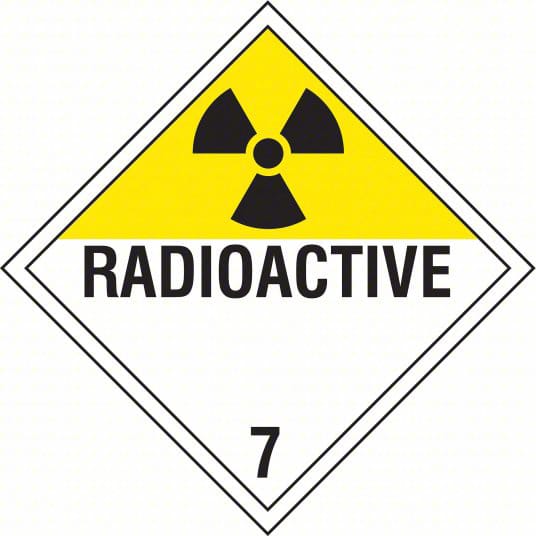
These signs, developed to protect people from radiation hazards on the job, are now iconic symbols, widely recognized both by workers and the general public. Unfortunately, there is only limited information in the existing technical literature about Hanford’s initial efforts to create radiation warning signs. That history, particularly the contributions made by Hanford, should not be lost.
References:
- Dr. W. D., Memorandum to Mr. W. O. Simon (with contributions from D. Witman et al.), November 4, 1944. Report HW-7-854, 3 pages. (Norwood, 1944)
- Kathren, Ronald L., Raymond W. Baalman, and William J. Blair. Herbert M. Parker: Publications and Other Contributions to Radiological and Health Physics. Battelle Press, 1986, pg. 367.
- Kathren, Ronald L., Raymond W. Baalman, and William J. Blair. Herbert M. Parker: Publications and Other Contributions to Radiological and Health Physics. Battelle Press, 1986, p. 480.
- National Park Service. “B Reactor Health Physics Exhibit: Painted Warnings.” National Park Service, www.nps.gov/articles/000/b-reactor-health-physics-exhibit-painted-warnings.htm.
- Oak Ridge Associated Universities (ORAU). “Radiation Warning Symbol.” ORAU Health Physics Museum, www.orau.org/health-physics-museum/articles/radiation-warning-symbol.html.
- (RHO, 1979) Rockwell Hanford Operations (RHO). Radiation Monitoring Manual of Standard Procedures, RHO-MA-145, April 1979
- Class 7 in 49 CFR 172. Title 49, Transportation, Code of Federal Regulations, Part 172, “Hazardous Materials Table, Special Provisions, Hazardous Materials Communications, Emergency Response Information, Training Requirements, and Security Plans.” U.S. Government Printing Office, 2023.
Additional Resources:
- 10 CFR 20. Title 10, Energy, Code of Federal Regulations, Part 20, “Standards for Protection Against Radiation.” U.S. Government Printing Office, 2023.
- Jones, Cynthia Gillian. “A Review of the History of U.S. Radiation Protection Regulations, Recommendations, and Standards.” Health Physics Journal, vol. 88, no. 2, February 2005, p. 105.
- Lloyd D. Stephens & Rosemary Barrett, “A Brief History of a 20th Century Danger Sign.”
- Lauriston S. Taylor, “Reminiscences About the Early Days of Organized Radiation Protection.”
- National Bureau of Standards, Radiation Protection. National Bureau of Standards Handbook H23. U.S. Government Printing Office, 1938.
- Kathren, Ronald L., Raymond W. Baalman, and William J. Blair. Herbert M. Parker: Publications and Other Contributions to Radiological and Health Physics. Battelle Press, 1986.
- Kathren, Ronald L. Health Physics: A Backward Glance. Pergamon Press, 1980 and Kathren, Ronald L., Raymond W. Baalman, and William J. Blair. Herbert M. Parker: Publications and Other Contributions to Radiological and Health Physics. Battelle Press, 1986.
- B Reactor: https://en.wikipedia.org/wiki/B_Reactor
Steven Woolfolk is certified by the American Board of Health Physics (1986, CHP). He is the owner of Xenophile Bibliopole & Armorer, Chronopolis, a rare books specialty bookstore in Richland.
